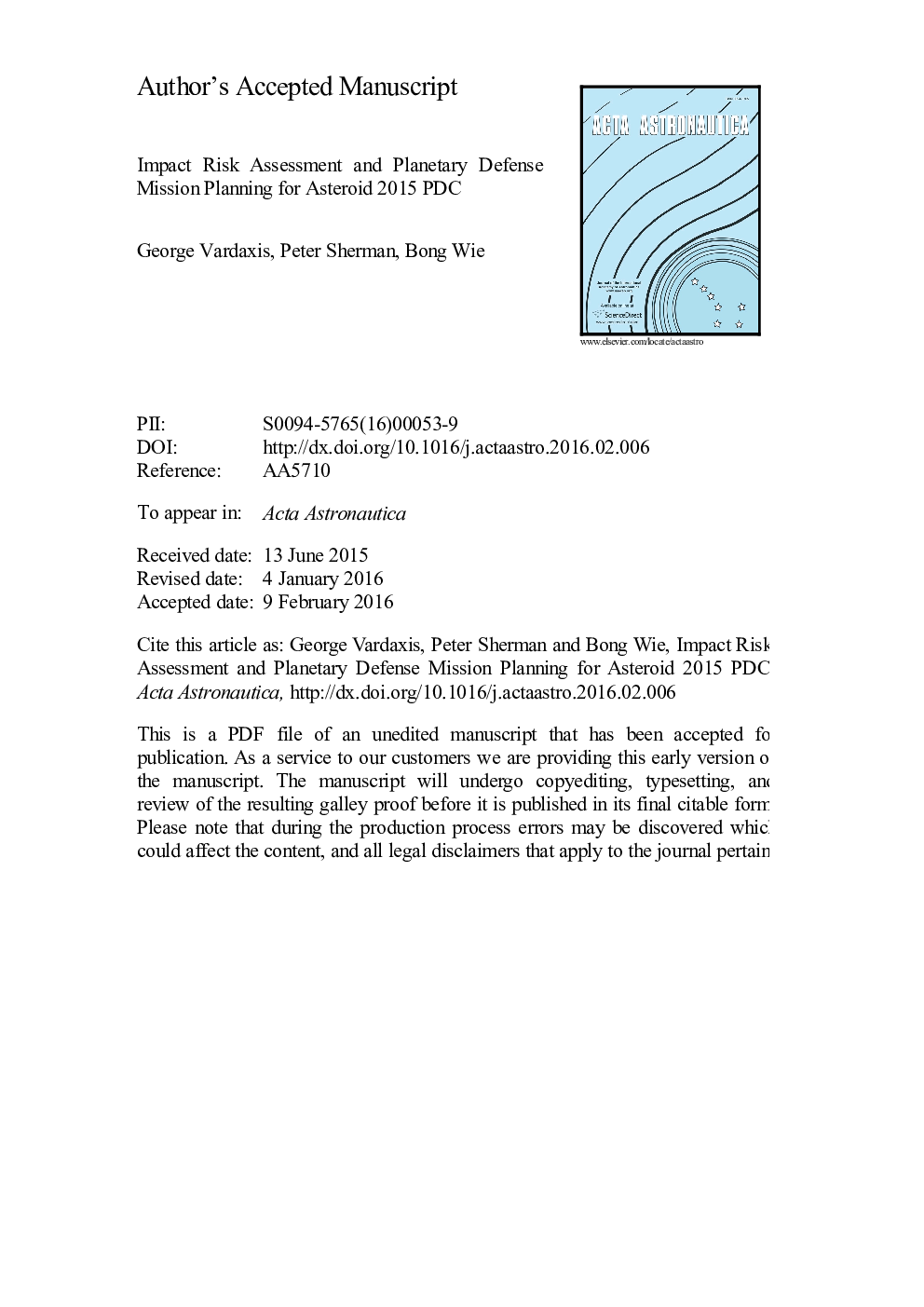| Article ID | Journal | Published Year | Pages | File Type |
|---|---|---|---|---|
| 8056298 | Acta Astronautica | 2016 | 31 Pages |
Abstract
In this paper, an integrated utilization of analytic keyhole theory, B-plane mapping, and planetary encounter geometry, augmented by direct numerical simulation, is shown to be useful in determining the impact risk of an asteroid with the Earth on a given encounter, as well on potential future encounters via keyhole passages. The accurate estimation of the impact probability of hazardous asteroids is extremely important for planetary defense mission planning. Asteroids in Earth resonant orbits are particularly troublesome because of the continuous threat they pose in the future. Based on the trajectories of the asteroid and the Earth, feasible mission trajectories can be found to mitigate the impact threat of hazardous asteroids. In order to try to ensure mission success, trajectories are judged based on initial and final mission design parameters that would make the mission easier to complete. Given the potential of a short-warning time scenario, a disruption mission considered in this paper occurs approximately one year prior to the anticipated impact date. Expanding upon the established theory, a computational method is developed to estimate the impact probability of the hazardous asteroid, in order to assess the likelihood of an event, and then investigate the fragmentation of the asteroid due to a disruption mission and analyze its effects on the current and future encounters of the fragments with Earth. A fictional asteroid, designated as 2015 PDC - created as an example asteroid risk exercise for the 2015 Planetary Defence Conference, is used as a reference target asteroid to demonstrate the effectiveness and applicability of computational tools being developed for impact risk assessment and planetary defense mission planning for a hazardous asteroid or comet.
Related Topics
Physical Sciences and Engineering
Engineering
Aerospace Engineering
Authors
George Vardaxis, Peter Sherman, Bong Wie,
